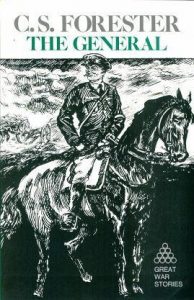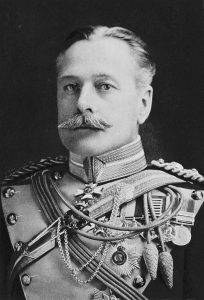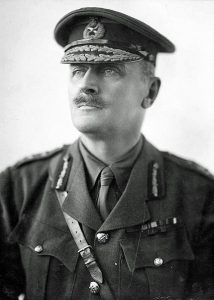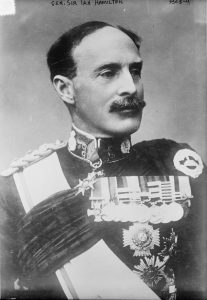
There is a very clear picture in the broader public memory of what a British general of the First World War looks like. He is moustached, bemedaled and beribboned, imperious and cold. Far more than that, he is a political and social insider, a product of rigid class systems, potentially at the expense of actual military capability.
While such a statement inevitably threatens to evoke great man history, generals are important to history. Consequently, so are the systems and societies that create them and the society of military high command that they lived within. Generals are held to a narrow, distorted but not necessarily always unfair stereotype, as with any stereotype has originated with a truth at some time.
The British General of the First World War is no different, especially the most distinguished ones, are no different. For the most part, they are all insiders, it is not overly surprising that these men were able to find themselves at the top of the military institutions of their times. But such a statement ignores the very real divisions within their own military society, and the myriad of other ways that these men, as individuals, bucked the stereotypes that they are all painted with.
This is seen in the cases of three British Generals, each in different theatres of the war, who showcase both the vindications and failures of this stereotype. Haig in the Western Front, Hamilton at Gallipoli and Allenby in Palestine.

Douglas Haig, and the Long Shadow
Publicly Educated, Cavalry, Personally Connected: The Archetypal Insider
Strategy By Increment
It is impossible to mention British Generals in the First World War without addressing the Western Front and the legacy of Sir Douglas Haig, such is his centrality in the British part of the war, and also to the common British conception of a general. As the commander of the British Expeditionary Force on the Western Front for the majority of the First World War, he is inescapable.
Haig started out as an officer of the 7th Hussars in the old Victorian army, seeing some initial service life in India but then crucially serving as Chief of Staff to the then Colonel (later Field Marshal, commander of the BEF) John French in the Boer War, who incidentally was also a cavalry officer (University of California Press, 1916, p. 950
From there he went from command to command, such as Director of Military Training and Chief of the General Staff in India before finding himself as the head of Aldershot Command, the heart of the small professional BEF immediately prior to the War (University of California Press, 1916, p. 950). Haig was seen as a capable staff officer, and a thinking soldier, although there were certainly questions to his originality and imagination as a commander.
After 1914, and not without some determined lobbying in the right places (Brooke-Shepherd, 1981 pp.3) he succeeded French as commander of the BEF and would continue in that position until the end of the war.
Haig was the insider’s insider. His ‘social graces and social connections…had smoothed his way to the top’. He was so much an insider, already a publicly educated Cavalry officer and Oxford graduate of inherited independent means, that was a close friend of the late King Edward VII and had married Dorothy Vivian, the maid of Honour to Queen Alexandria in the private chapel of Buckingham Palace (Brooke-Shepherd, 1981, p. 3).
Pigmies and Sharpened Mangoes
How Haig is remembered today is probably best demonstrated in his portrayal in Blackadder Goes Forth, where he is seen as an exaggeration of Stephen Fry’s already caricaturish General Melchett, patiently lining up models of his soldiers on a board before causally and callously knocking them all down and sweeping them away into a bin. His very name is today synonymous with the word butcher. This is a debate that in the literature has mostly come down in somewhat favour of Haig’s competence, but remains sundered by the debate between the works of Travers and Terraine (Historical Association, 2004, p. 32).
Terraine authored in 1963, as the public perception of Haig was starting to significantly degrade with the cultural shifts of the time, Douglas Haig: The Educated Soldier, which argued that Haig was not indifferent to the tremendous suffering of his men or out of step with the reality of the war. Traver’s rebuttal came in 1987s The Killing Ground, seeing Haig as an institutional product of an army that placed morale above firepower, which it had failed to realise was the now the most important aspect of war.
More recent works (Todman, 2005) have provided something of a synthesis such as pointing out that this focus on morale had been based on not unfair conclusions from wars prior to 1914 (pg75), and the disparity between the development of firepower and communications meant that generals were often physically unable to control their units (pg76).
Haig’s popular memory prior to its current doldrums was always a complicated issue, subject to historiographical assaults by other key figures, chiefly Churchill and Llyod George (Todman, 2005, pp. 88-89), political division (pp.90) and not so subtle but ambivalent characterisation by C.S Forester (Harvey, 2016). Such was the ‘Janus-like’ confusion in British memory of Haig that Basil Liddell Hart actively compared it to Jekyll and Hyde (Todman, 2005, p. 93).
If such a comparison is fair then ironically, true to the book itself, in the matter of Haig’s popular memory and regardless of the historical debate Jekyll was long ago absorbed by Hyde.

Edmund Allenby, Right Man or Right Situation?
Publicly Educated, Cavalry, Social Insider, Military Outsider
Lords of the Desert
Allenby, similarly to Haig, was a cavalry officer, although in the 6th Inniskilling Dragons, as opposed to Haig’s more distinguished 7th Hussars, and was also a social insider. after early service in South Africa, he was the commander of the Cavalry Division of the BEF of 1914 (Hughes, 2006, p. 14).
He made a name for himself not necessarily for the best reasons, first earning the title of ‘the bull’ (Brooke-Shepherd, 1981, p. 166) for his aggressive and pedantic manner with his subordinates (Hughes, 2006, p. 15). although it is possible that this was an overcompensation for an apparent shyness complex (pp.15). he also somewhat fumbled his command of the cavalry division in 1914, being a partial cause behind its eventual disintegration at the end of the retreat from Mons (p.17) and continued to blunder through command of V Corps, characterised by a lack of original ideas and a near slavish devotion for following out orders to the letter, leading to Archibald Wavell, the future Field Marshal and Allenby’s biographer to dismiss him at the time as another ‘thunder and blunder’ general. This came to ahead in 1917, when despite careful preparation by Allenby in command of the Third Army, he failed to puncture the German line at Arras, despite a significant advance, and in the face of complaints from his divisional commanders, was sacked by Haig (p.28).
However, he found a soft landing as commander of the Egyptian Expeditionary Force in Palestine, replacing the somewhat fumbling Murray and with a mandate from Llyod George to take Jerusalem at the earliest opportunity (Brooke-Shepherd, 1981, p. 166). This he achieved, although not cheaply, and by the following year had formulated a plan for the capture of all of Palestine (p169). This was achieved through a significant use of diversion and misdirection to dupe the Ottomans on the direction of his attack (p169) and in practice culminated in a series of decisive victories over the Ottomans and what Brooke-Shephard attributes as the best use of cavalry in the entire war at the Battle of Megiddo (p.175).
Uncrowned Kings
In terms of British Generals of the first war, Allenby has always been in the shadow of Haig. Not only that, but in popular memory Allenby is in the shade in his own theatre, rendered a side character to the drama and exploits of T.E Lawrence. Indeed, this is exactly what he is in his 1962 portrayal by Jack Hawkins in Lawrence of Arabia, and this is probably the greatest level of fame in popular memory that Allenby achieved, matched only by his popular notoriety during the war, where he was compared endlessly to Richard the Lionheart following his capture of Jerusalem in December 1917 as a gift to the nation (Thomas, 1919).
Siegfried Sassoon makes mention of him in his Memoirs of an Infantry Officer, as his battalion was posted to Allenby’s command for the battle of Arras, although Allenby escapes with only a handful of sardonic and nonspecific comments (Sassoon, 1930, pp. 176,177,182,190).
Whilst certainly a social insider, Allenby appears to have been a military outsider. While cavalry officers appeared to have a disproportionate influence on British command in the first War, Allenby was seemingly resented by his fellow commanders in the west, influenced probably by his poor command in 1914, his poor communication skills and a personal feud with Haig (Hughes, 2006, pp. 20, 21,23). He argued for innovative attacking tactics in 1917 that were not seen in practice until the following year, but was overruled by Haig.
In Palestine however, having been cast aside by the military insiders of doctrinal orthodoxy, he was free to implement his ideas, and his success in 1918 compare sharply to his previous three years of war experience. It appeared as though through defiance of the doctrinal in-group, Allenby was able to excel, although it is worth appreciating that by September 1918, prior to his 1918 offensive, he significantly outnumbered his demoralised and tired opponent in every count that mattered (Brooke-Shepherd, 1981, pp. 172, 175).

Ian Hamilton and the Peril of Non-Conformity
Publicly Educated, Infantry, Politically Connected, Odd. Social Insider, Military Outsider
‘Too Much of Everything’ (Carlyon, 2003, p. 30)
Ian Hamilton, as opposed to Allenby, Haig, French and many other influential British generals of the first war was an infantry officer, although was similarly publicly educated and of the upper class. He had served with distinction in nearly every British colonial conflict since joining in 1873, so much so that Carlyon asserts that he had ‘seen more of war than just about any senior British officer’ and had been recommended for the Victoria Cross twice (Carlyon, 2003, p. 29). He had also been the senior British observer in the Russo-Japanese war, which had proved to him that cavalry could no longer ‘hope to produce any effect on the field of battle’ (Hamilton, 1905, p.166), a claim that cannot have won him any favours in Britain.
He was however, unpopular and mistrusted in British military circles, owing to his personal connections to politicians (chiefly Churchill), his sentimentality and general oddness compared to his peers (Carlyon, 2003, pp. 29, 30). Consequently Kitchener, much less Haig, would not have him on the Western Front, but at the same time he was too experienced to do nothing. For this reason, he was chosen to command the Mediterranean Expeditionary Force (Carlyon, 2003, p. 30), in its attack on the Gallipoli peninsula, which was ultimately an unmitigated failure.
Hamilton, who never held another command following the debacle, had little to do with the original strategic conception of the plan and was never given the proper resources to achieve victory (Dolan, 2010).
A Misremembered Crucible
Despite the tremendous effect of Gallipoli on the public consciousness and popular memory of Australia and New Zealand, and the ignominy of the defeat in Britain at the time, Hamilton himself remains relatively unknown. He avoids depiction in Peter Weir’s 1981 film Gallipoli, although it is of note that the Australian staff officers in the film are depicted with British accents, furthering an Australian popular conception of Gallipoli as a senseless waste of Australian life due to the incompetence of upper-class British officers, principally generals. This is despite the fact that at least immediately prior to the landings and indeed afterwards, Hamilton, and the British commander of the Australia/ New Zealand Corps, Birdwood were well liked amongst that corps (Dolan, 2010).
Hamilton however certainly interfered with the Dardanelles commission that immediately followed the debacle however, with the intention of protecting himself, as indeed did other key players in the campaign, such as Churchill (Travers, 1994). The Commission itself was a thoroughly corrupt affair with tampering of and collusion between witnesses, who also knowingly lied to the commission (Travers, 1994).
Like Allenby, while Hamilton was an insider of the social strata which produced most if not all British Generals of the first war, he was a definite outsider in military circles. His relationship with his subordinate Stopford was poisoned by the fact that they both belonged to different cliques of colonial British army experience, Stopford being an ‘African’ and Hamilton an ‘Indian’ (Travers, 1994), and due to a very strange professional relationship with Kitchener which left Hamilton embittered towards him, the former, may well have, either in the planning or execution of the campaign, thrown Hamilton under the metaphorical bus (Dolan, 2010).
In truth, British Generals of the First World War were insiders, all from a social and financial class above those they ordered to fight and die. Every general here considered, with the possible, came from comfortable if not significant personal or inherited wealth and had considerable personal connections to powerful figures of state.
But at the same time, it was also possible for such a person to be competent and empathise with their troops, far from the cold-hearted butchers of Blackadder, or the distant figures of Sassoon. And, within their brotherhood of command, there were also distinctions and social lines. It paid to be within them, but sometimes it was possible to achieve more beyond them, though this did not come without attendant risk.
Bibliography
Brooke-Shepherd, G., 1981. November 1918: Triumph and Tragedy in the Final Days of WW1. 2018 WW1 Centenary ed. London: Bloomsbury Publishing .
Carlyon, L., 2003. In: Gallipoli. s.l.:Bantam Books, p. 29.
Dolan, H., 2010. 36 Days, The Untold Story Behind the Gallipoli Landings. Sydney: Macmillan Australia.
Hamilton, I., 1905. A staff Officer’s Scrapbook During the Russo-Japanese War. Volume 1 ed. London: E. Arnold .
Harvey, A., 2016. C.S Forester’s “The General” and British Generals in the Great War. Journal of the Society for Army Historical Research, 94(380), pp. 336-339.
Historical Association, 2004. Polychronicon: Douglas Haig: Donkey or Scapegoat. Teaching History , Volume 117, pp. 32-33.
Hughes, M., 2006. Chapter One: Edmund Allenby . In: I. F. B. &. S. J. Corvi, ed. Haig’s Generals . s.l.:Casemate Publishers, pp. 14-28.
Sassoon, S., 1930. Memoirs of an Infantry Officer. 2018 Illustrated Trade Paperback ed. London: Faber & Faber.
Thomas, L., 1919. With Allenby in Palestine. Current History 1916-1940, 11(2), pp. 326-328.
Todman, D., 2005. In: The Great War: Myth and Memory. London: Bloomsbury Publishing, pp. 74-93.
Travers, T., 1994. Command and Leadership Styles in the British Army: The 1915 Gallipoli Model. Journal of Contemporary History , 29(3), pp. 403-442.
University of California Press, 1916. General Sir Douglas Haig: Career of the New British Commander in Chief in Frrance. The New York Times Current History of the European War, 3(5), pp. 949-951.
With thanks to Chris Phillips for providing the suggestion to focus on General by theatre.

